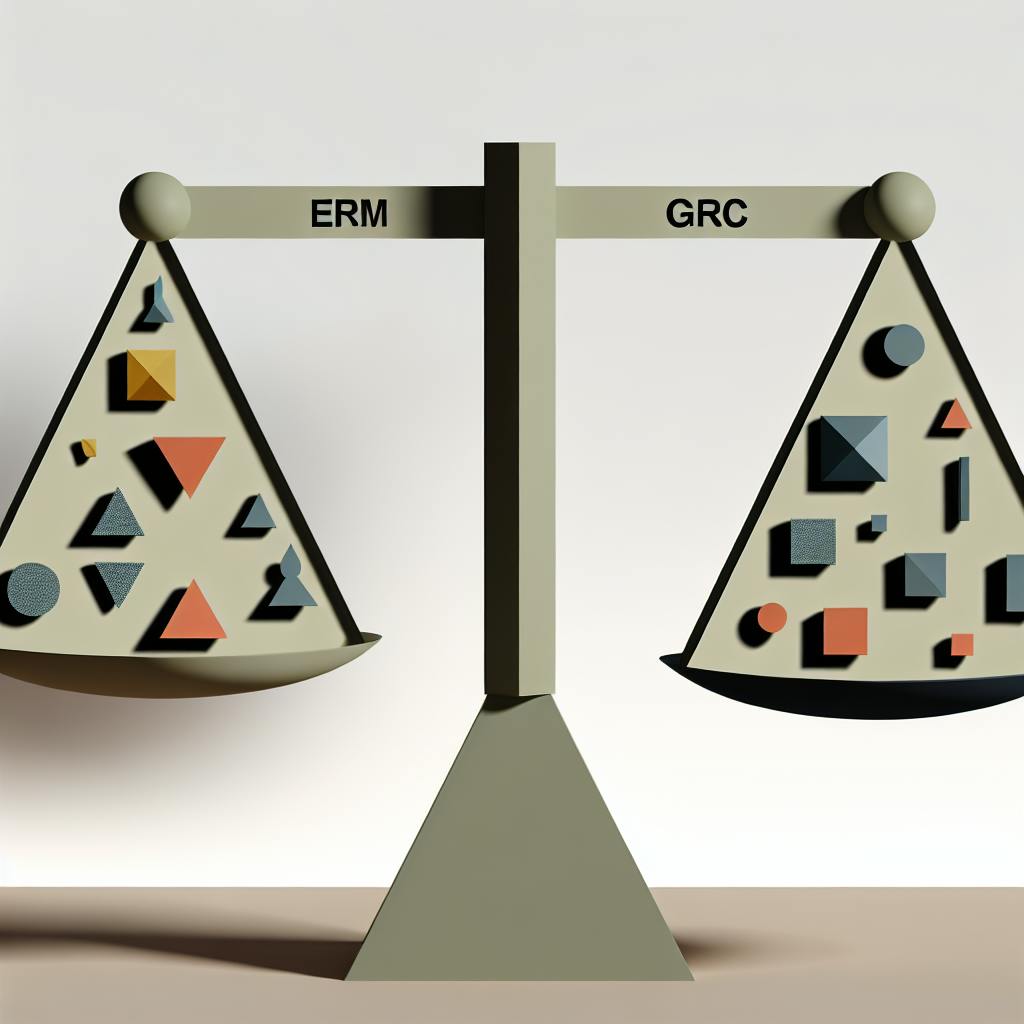Regulatory change software helps businesses stay compliant with ever-changing rules and regulations. Here's what you need to know:
- Automates tracking, assessing, and implementing new regulatory requirements
- Key features: real-time monitoring, impact analysis, task management, document storage, reporting
- Used by heavily regulated industries like banking, healthcare, energy
- Typical users: compliance officers, legal teams, risk managers, executives
Related video from YouTube
Core Functions
| Function | Purpose |
|---|---|
| Monitoring | Tracks regulatory changes |
| Impact Analysis | Assesses effects on business |
| Task Management | Assigns compliance tasks |
| Document Management | Centralizes compliance docs |
| Reporting | Creates compliance reports |
| Integration | Connects with other systems |
Setup Process
- Choose relevant regulations
- Enter company details
- Set risk tolerance
- Import existing compliance data
- Organize regulations by category
- Configure user access levels
- Connect to other business systems
Daily Use
- Check dashboard for updates (8:00 AM)
- Review high-priority changes (8:15 AM)
- Assign tasks to team members
- Generate compliance reports
- Collaborate using built-in communication tools
Bottom line: Regulatory change software is becoming essential for businesses to stay compliant efficiently and avoid costly fines.
Getting Started
Let's break down the setup process for regulatory change software. It's not as complicated as you might think.
Basic Setup Steps
First, you need to tailor the software to your company's specific needs:
- Pick your regulations: What rules apply to your business? A bank might focus on Basel III, Dodd-Frank, and GDPR.
- Company profile: Enter your company's details, industry, and where you operate.
- Risk appetite: How much risk can you handle? This helps the software prioritize alerts.
- Existing data: Moving from another system? Don't forget to bring your current compliance info with you.
Setting Up Compliance Rules
Now, let's organize those compliance rules:
Create a regulatory "filing system". Think of it as organizing regulations by category, location, and department.
For each regulation, add the specific rules you need to follow. Then, decide how often you want the software to check for updates in each area.
Lastly, set your alert levels. Maybe small changes don't need immediate attention, but big ones might need an instant heads-up.
Setting User Access
When it comes to compliance, security is key. Here's a quick guide on who sees what:
| Access Level | What They Can Do | Who Might Need It |
|---|---|---|
| Admin | Everything | Chief Compliance Officer |
| Manager | Most things, plus assign tasks | Compliance Manager |
| User | See their tasks and relevant info | Department Head |
| Read-only | Just view specific reports | Board Member |
Remember, only give people access to what they need. As Chaithanya Yambari from Zluri says:
"Effective user access management empowers you to grant, modify, and revoke user permissions efficiently, thereby reducing the potential for unauthorized access and enhancing overall security posture."
Connecting to Other Systems
Your regulatory software doesn't work alone. Here's how to connect it:
- Figure out which systems need to talk to each other (like your ERP or CRM).
- Use APIs to connect them. Your IT team can help with this.
- Make sure data flows correctly between systems. For example, check that policy updates in one system show up in the regulatory software.
- Set up single sign-on. This lets users access the new software with their usual company login.
Setup Checklist
Here's a quick list to make sure you've covered everything:
- Define what regulations you need to track
- Set up your company profile
- Organize your regulations
- Input your compliance rules
- Set how often to check for updates
- Define what changes trigger alerts
- Set up who can access what
- Connect to your other systems
- Bring in your old compliance data
- Test everything thoroughly
- Train your team on the new system
sbb-itb-d1a6c90
Key Features
Regulatory change software packs a punch when it comes to keeping your compliance game strong. Here's what makes these systems tick:
Regulation Updates and Alerts
Staying on top of regulatory changes is like drinking from a firehose. But with automated updates, you can:
- Get real-time monitoring 24/7
- Use AI to filter out the noise
- Receive custom alerts via email, SMS, or in-app messages
Take the EU's GDPR in May 2018. Companies using this software got instant alerts about the new data protection rules. That's huge when you're facing potential fines of up to €20 million or 4% of global turnover.
Change Analysis Tools
Knowing about a change is one thing. Figuring out what it means for your business is another. These tools help you:
- Assess the impact on different parts of your organization
- Calculate the risk of non-compliance
- Spot gaps between your current practices and new requirements
Compliance Tracking
Keeping tabs on your compliance efforts is crucial. The software helps by:
- Managing tasks and assignments
- Giving real-time visibility into compliance status
- Sending reminders for upcoming deadlines
Record Keeping
Good record-keeping is the backbone of compliance. With this software, you get:
- A central place to store all compliance docs
- Version control to track changes over time
- An audit trail of all compliance activities
As Resolver, a top compliance software provider, puts it: "A centralized location for all compliance-related documents simplifies access and management, making it easier to demonstrate compliance efforts to regulators and auditors."
Features to Look For
Here's a quick rundown of what to consider:
| Basic Features | Advanced Features |
|---|---|
| Regulatory updates | AI-powered predictive analytics |
| Document management | Third-party data source integration |
| Task assignment | Custom risk assessment tools |
| Compliance calendar | Automated workflow creation |
| Basic reporting | Advanced data visualization |
The right mix depends on your organization's size, industry, and specific needs. Focus on the tools that'll have the biggest impact on your compliance efforts.
Day-to-Day Use
Let's look at how to use regulatory change software to make your daily compliance tasks easier.
Checking Updates
Start your day by looking at new regulatory updates. Most software shows these on a dashboard. Here's a quick morning routine:
| Time | Action |
|---|---|
| 8:00 AM | Log in and check dashboard |
| 8:15 AM | Look at high-priority changes |
| 8:30 AM | See how changes affect current policies |
The software does the hard work for you. Jessica Parant from Pythian says:
"Through reporting, we can see where we need to improve, where are our gaps and where our strengths are, and how we can continue growing on those strengths."
Managing Tasks
After you find important changes, it's time to act. Use the software to:
- Give tasks to team members
- Set due dates for policy updates
- Keep track of compliance projects
For example, if there's a new data protection rule, you might need to update privacy policies, train staff, and change how you handle data.
Creating Reports
You need to show you're following the rules. Use your software to:
- Make compliance status reports
- Keep a record of all compliance activities
- Create custom reports for different groups
Most software has templates, so you can make good-looking reports quickly.
Working as a Team
Compliance is a team effort. Here's how to work together using your software:
1. Talk in one place: Use the software's chat features to discuss compliance. This cuts down on emails.
2. Share files: Keep all your compliance documents in one safe spot.
3. Check team progress: See who's finishing tasks and where you might be falling behind.
4. Have online meetings: Some software lets you video chat for quick team updates.
Using these features helps your team work better together. As Resolver's team says:
"Successful implementations provide valuable insights."
Upkeep
Keeping your regulatory change software in top shape is key for staying compliant. Here's what you need to know:
Software Updates
Updates are crucial. They:
- Fix security issues
- Add new features
- Keep up with regulatory changes
CISA puts it bluntly:
"New vulnerabilities are continually emerging, but the best defense against attackers exploiting patched vulnerabilities is simple: keep your software up to date."
To stay current:
- Turn on automatic updates
- Check for updates weekly
- Install critical updates ASAP
System Checks
Regular checks catch problems early. Here's a quick guide:
| When | What to Do |
|---|---|
| Daily | Check system performance and user activity |
| Weekly | Make sure backups are working |
| Monthly | Test how well it works with other systems |
| Quarterly | Do a full system check |
These checks aren't just about finding issues - they help your software run better.
Data Protection
Protecting your compliance data isn't optional. Do this:
- Use strong encryption
- Set up multi-factor authentication
- Back up data and test restores
- Keep an eye on who's accessing data
Veriforce, a big name in compliance software, says:
"By staying current with updates and diligently maintaining the tools, companies can proactively protect against emerging threats and maintain the reliability and longevity of their compliance monitoring efforts."
Using It Better
Want to get more from your software? Try these:
1. Tweak your alerts: Set them up so you're not overwhelmed.
2. Train your team: Make sure everyone knows how to use it.
3. Connect your workflows: Make it work with your other business stuff.
4. Check and improve: Look at how you're using it and find ways to do better.
5. Stay in the loop: Keep up with what's new in the industry and with your software.
Summary
Regulatory change software is a game-changer for businesses dealing with compliance. Here's what you need to know:
Why It Matters
The numbers speak for themselves:
- Regulatory updates? Up 500% in the last decade.
- Regulatory documents? About 300 million pages.
- Non-compliance? Big fines and a damaged reputation.
Core Features
| Feature | What It Does |
|---|---|
| Real-time monitoring | Keeps you in the loop 24/7 |
| Impact analysis | Shows how new rules affect you |
| Task management | Helps you handle compliance tasks |
| Document management | Stores all your compliance docs |
| Reporting | Creates custom reports |
Real-World Impact
Resolver, a big player in compliance software, says their customers see:
- 75% boost in compliance testing efficiency
- Nearly $979,000 saved in potential penalties
That's real money and time saved.
Daily Use
Here's what using this software looks like:
- Check for updates (8:00 AM)
- Look at important changes (8:15 AM)
- Hand out tasks to your team
- Make compliance reports
- Work with your team using the software's tools
Best Practices
To get the most out of your software:
- Keep it up-to-date
- Do regular system checks
- Protect your data
- Train your team well
- Fine-tune your alerts
Amanda Cohen from Resolver says:
"A really successful compliance technology is going to help you track your regulatory inventory. Ideally, you have a system that is flowing all of that information into you."
Looking Ahead
The regulatory world isn't slowing down. Since 2016, we've seen over 52,000 new international regulations. Banks alone have paid $204 billion in fines since 2008.
Bottom line? Regulatory change software isn't just nice to have. It's becoming a must-have for businesses that want to stay compliant, efficient, and competitive.
FAQs
What steps do you take to ensure software compliance?
Ensuring software compliance is a must for organizations dealing with regulatory changes. Here's how to do it:
1. Identify requirements
Figure out what your organization needs to comply with. This sets the stage for your compliance strategy.
2. Assess current processes
Take a good look at how you're handling governance, risk, and compliance now. This helps you spot where you can improve.
3. Define stakeholders
Pick out who's going to be responsible for what in your compliance efforts. This way, everyone knows their job.
4. Implement a robust system
Use regulatory change software to make compliance management easier. For example, Resolver's customers saw a 75% boost in compliance testing efficiency and saved nearly $979,000 in potential penalties.
5. Conduct regular audits
Check your compliance measures often to make sure they're still working and up-to-date.
Here's a quick breakdown:
| Step | Action | Benefit |
|---|---|---|
| 1 | Identify requirements | Focused compliance strategy |
| 2 | Assess current processes | Identify improvement areas |
| 3 | Define stakeholders | Clear accountability |
| 4 | Implement robust system | Improved efficiency, cost savings |
| 5 | Conduct regular audits | Maintain up-to-date compliance |
Robin Alonso, Chief Compliance Officer at Zinnia, puts it this way:
"A comprehensive and structured approach to change management - the process of monitoring, analyzing, and implementing regulatory changes - can ensure your ability to maintain compliance effectively with minimal disruption to your business and clients."
In other words: Stay organized, stay on top of changes, and you'll stay compliant without messing up your business.


